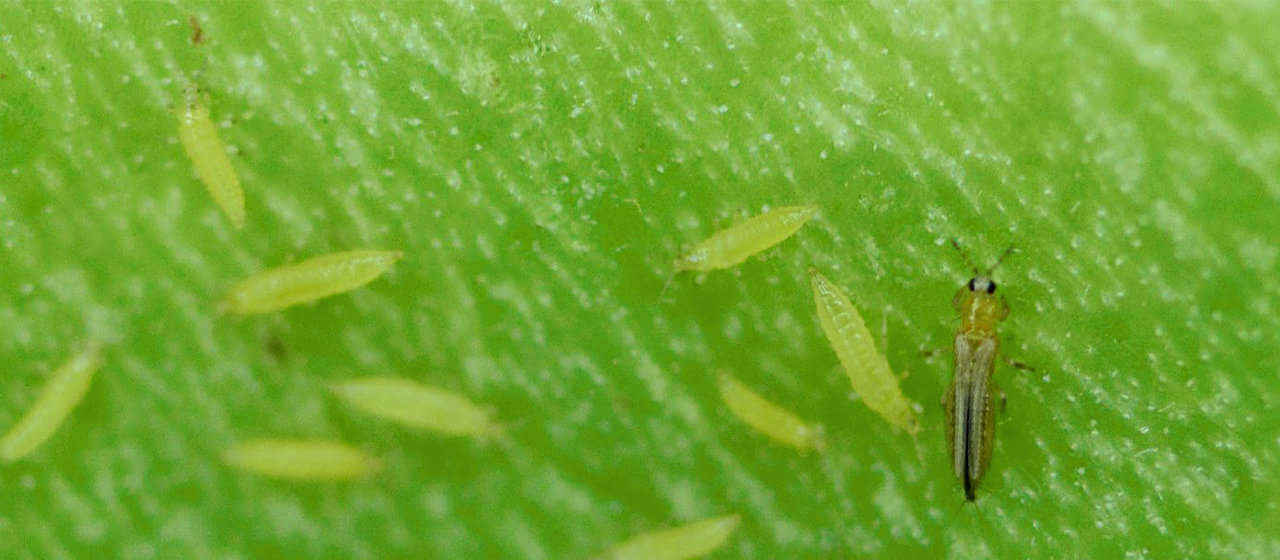How do you recognise the infestation?
Thrips infestations can be recognised by silvery damage to the leaves. This is because the thrips suck out the leaf cells. They do this by scraping over the leaf. The thrips also leave dark spots on the leaves, these are their faeces. The infestation can also be recognised by the deformation of the leaves or growth inhibition. We use the following glue trap from Andermatt Biogarten for control:
How can (further) damage be prevented?
Our advice is always to use biological control agents. One of these means against thrips is the predatory mite. Adult predatory mites consume thrips at all stages, the nymphs prefer larvae. An additional advantage is that the predatory mite also feeds on other pests such as aphids, spider mites and whiteflies. We recommend the following organic products from Andermatt Biogarten:

